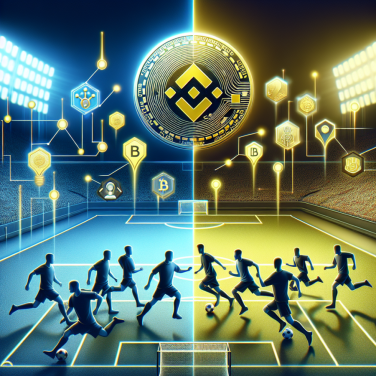Sure, let's delve deeper into some of the promising M2E (move-to-earn) crypto platforms which are shaping the future of digital finance. These platforms reward users with cryptocurrency for physical activity, such as walking, running, or working out, making them part of the next wave in the merging worlds of fitness and finance.
One exciting platform is STEPN, which has emerged as a leader in the M2E space. It utilizes GPS-tracking and integrates smart sneakers as non-fungible tokens (NFTs) to track users' movements and reward them with tokens. STEPN's dual-token system, which includes a governance token and a utility token, allows users to have a say in the project's direction and also spend tokens within the ecosystem.
Another innovative entrant is Sweatcoin, a platform that incentivizes users to exercise by converting their steps into a digital currency called Sweatcoins. These can then be used to purchase goods, services, or experiences, showing a real-world application of earning through movement. The app has already gained a significant user base, demonstrating the demand for M2E platforms.
Furthermore, there is MoveZ by Unizen, which aims to provide a seamless M2E experience with a focus on accessibility and community engagement. It's built to incorporate a wide range of physical activities beyond just walking or running, looking to capture a broader fitness audience. MoveZ intends to introduce a ZEN token for rewards and build a community-driven ecosystem.
FitFi (Fitness Finance) is also a concept on the rise, with platforms like Calo aiming to blend fitness with decentralized finance (DeFi). Calo features a tokenized rewards system where users earn tokens by completing fitness challenges or reaching certain milestones. These tokens can then be staked for yield or used in a variety of DeFi applications.
Dotmoovs is another platform with an M2E model but with a competitive edge. It offers AI-powered sports challenges where users can stake their tokens against other users and earn rewards based on their performance in various physical activities. This adds a gamified element to the M2E concept, where fitness and competition drive engagement and potential earnings.
These platforms are not only innovating within the digital finance realm but are also pioneering the integration of health and wellness into blockchain technology. They leverage smart contracts and decentralized applications (dApps) to create an environment where users can monetize their physical activity, bridging the gap between the virtual currency world and real-world health benefits.
Read also:
Exploring the Unique World of Jacquet: A Deep Dive
The Rise of Fitness-Focused Digital Economies: M2E Platforms Shaping the Future of Finance
As the digital era forges ahead, the novel concept of move-to-earn (M2E) platforms is poised to redefine the interplay between fitness, finance, and technology. These emerging M2E crypto platforms, leveraging the power of blockchain and cryptocurrency, incentivize users to lead healthy lifestyles by offering financial rewards for physical activity. The infusion of fitness into the digital economy not only resonates with a health-conscious population but also signifies a transformative phase in personal finance management.
At the core of M2E platforms is the idea that users can earn digital assets or cryptocurrencies by completing various physical activities such as walking, running, or working out. This is facilitated by the integration of smart devices and wearables that meticulously capture motion data which, when verified, unlocks rewards for the users. The blockchain acts as a secure, transparent ledger, ensuring that the earned tokens or rewards cannot be duplicated or counterfeited, presenting a robust solution to potential fraud in the reward system.
The digital tokens earned can be seen as a form of investment or savings. Participants can trade them on various cryptocurrency exchanges, stake them for additional yield, or use them to purchase goods and services within a particular ecosystem. Some M2E platforms have also interconnected with DeFi (Decentralized Finance) protocols, allowing users to lend or borrow against their fitness-generated assets, thereby integrating with broader financial systems.
This intersection of fintech and health-tech has also sparked discussions on personal data usage and privacy. As users share their motion data to earn rewards, M2E platforms must navigate the complex landscape of data security and ensure compliance with privacy regulations. The transparent nature of blockchain provides some reassurance, as data transactions can be tracked and audited by users; however, concerns around personal data misuse persist.
In addressing sustainability, M2E platforms could play a critical role. By incentivizing eco-friendly transportation choices like walking or biking over driving, they contribute to reduced carbon emissions. Moreover, the blockchain networks utilized by these platforms are increasingly adopting more energy-efficient consensus mechanisms, thereby minimizing the environmental impact of their operation.
Harnessing network effects, these platforms have started creating a sense of community among users. Fitness challenges, leaderboards, and social features encourage engagement and connection, while the financial incentives reinforce continued participation. Consequently, M2E platforms are not just fitness trackers but are evolving into digital economies of their own.
Furthermore, these M2E platforms often integrate gamification elements to boost user engagement.
Exploring the Frontiers of Move-to-Earn: Innovation in Crypto Platforms
The move-to-earn (M2E) phenomenon marks a radical shift from traditional cryptocurrency earning mechanisms by incentivizing users to be physically active. Emerging M2E platforms are leveraging blockchain technology to marry fitness and finance, encouraging a healthier lifestyle while allowing users to earn digital assets.
One of the main drivers of innovation within these platforms is the integration of gamified elements. These elements transform routine physical activities like walking, jogging, or cycling into engaging and rewarding challenges. By incorporating goals and achievements, along with competitive features such as leaderboards, M2E apps strive to make the earning experience more immersive and motivating.
A pivotal aspect of the newest M2E platforms is their focus on accessibility. Designers are working to ensure that earning potential doesn't solely favor the most active users but also accommodates everyday activities for a broader demographic. To achieve this, some platforms are implementing adaptive earning algorithms that consider individual user activity levels and adjust rewards accordingly.
Furthermore, M2E platforms are exploring partnerships with health insurance companies to provide users with financial incentives for maintaining an active lifestyle. These partnerships could lead to reduced health premiums for users, providing an additional layer of real-world value to the digital assets earned through activity.
Another frontier being explored is the importance of social drivers in M2E platforms. Social connectivity, including the ability to form teams or join clubs, not only fosters community but also enhances user engagement and retention. These platforms capitalize on the inherent human desire for social interaction, turning individual fitness goals into collaborative efforts.
An emerging trend within some of these innovative M2E platforms is the utilization of Non-Fungible Tokens (NFTs). In this context, NFTs might represent unique virtual assets such as digital sneakers or other fitness gear that can be used within the app ecosystem to enhance earning potential or provide other bonuses. As users accrue or trade these NFTs, they are further invested in the platform's economy, creating a robust internal marketplace.
Moreover, sustainability is a theme that resonates strongly with the current user base, and some M2E crypto platforms are incorporating environmental rewards. Users can, for example, opt to convert their earned tokens into contributions towards environmental projects or carbon offset initiatives, which is especially appealing to environmentally conscious individuals.
Privacy and data security are also at the forefront of M2E platform development. With the accumulation of health-related data, these platforms are tasked with ensuring the highest levels of encryption and security.




